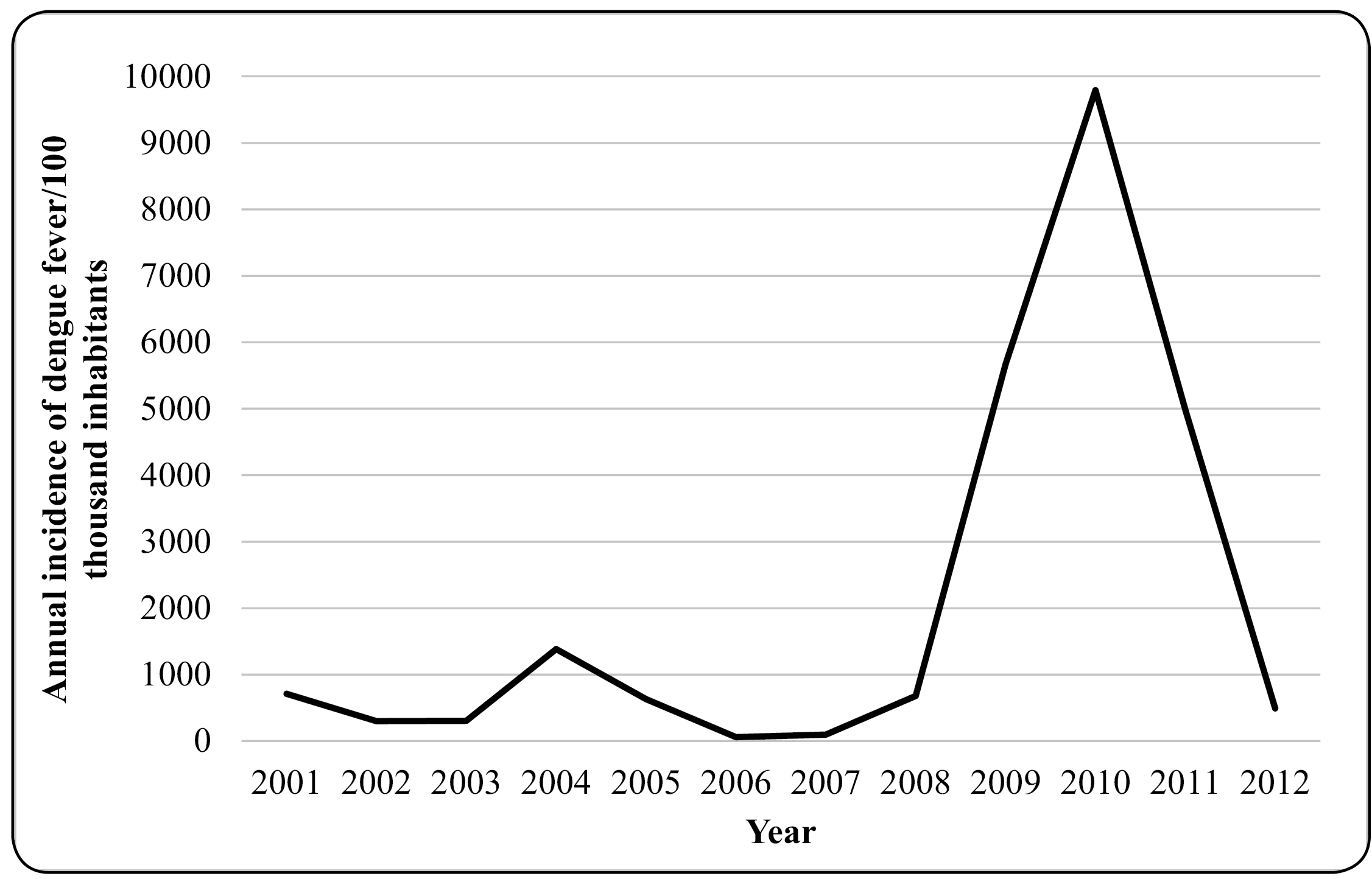Abstract
INTRODUCTION:
This study aimed to examine the impact of climate variability on the incidence of dengue fever in the city of Rio Branco, Brazil.
METHODS:
The association between the monthly incidence of dengue fever and climate variables such as precipitation, temperature, humidity, and the Acre River level was evaluated, using generalized autoregressive moving average models with negative binomial distribution. Multiple no-lag, 1-month lag, and 2-month lag models were tested.
RESULTS:
The no-lag model showed that the incidence of dengue fever was associated with the monthly averages of the Acre River level (incidence rate ratio [IRR]: 1.09; 95% confidence interval [CI]: 1.02-1.17), compensated temperature (IRR: 1.54; 95% CI: 1.22-1.95), and maximum temperature (IRR: 0.68; 95% CI: 0.58-0.81). The 1-month lag model showed that the incidence of dengue fever was predicted by the monthly averages of total precipitation (IRR: 1.21; 95% CI: 1.06-1.39), minimum temperature (IRR: 1.54; 95% CI: 1.24-1.91), compensated relative humidity (IRR: 0.90; 95% CI: 0.82-0.99), and maximum temperature (IRR: 0.76; 95% CI: 0.59-0.97). The 2-month lag model showed that the incidence of dengue fever was predicted by the number of days with precipitation (IRR: 1.03; 95% CI: 1.00-1.06) and maximum temperature (IRR: 1.23; 95% CI: 1.05-1.44).
CONCLUSIONS:
Considering the impact of global climate change on the region, these findings can help to predict trends in dengue fever incidence.
Keywords:
Dengue; Climate; Climate change; Amazonian ecosystem; Brazil

 Thumbnail
Thumbnail
 Thumbnail
Thumbnail
 Thumbnail
Thumbnail


